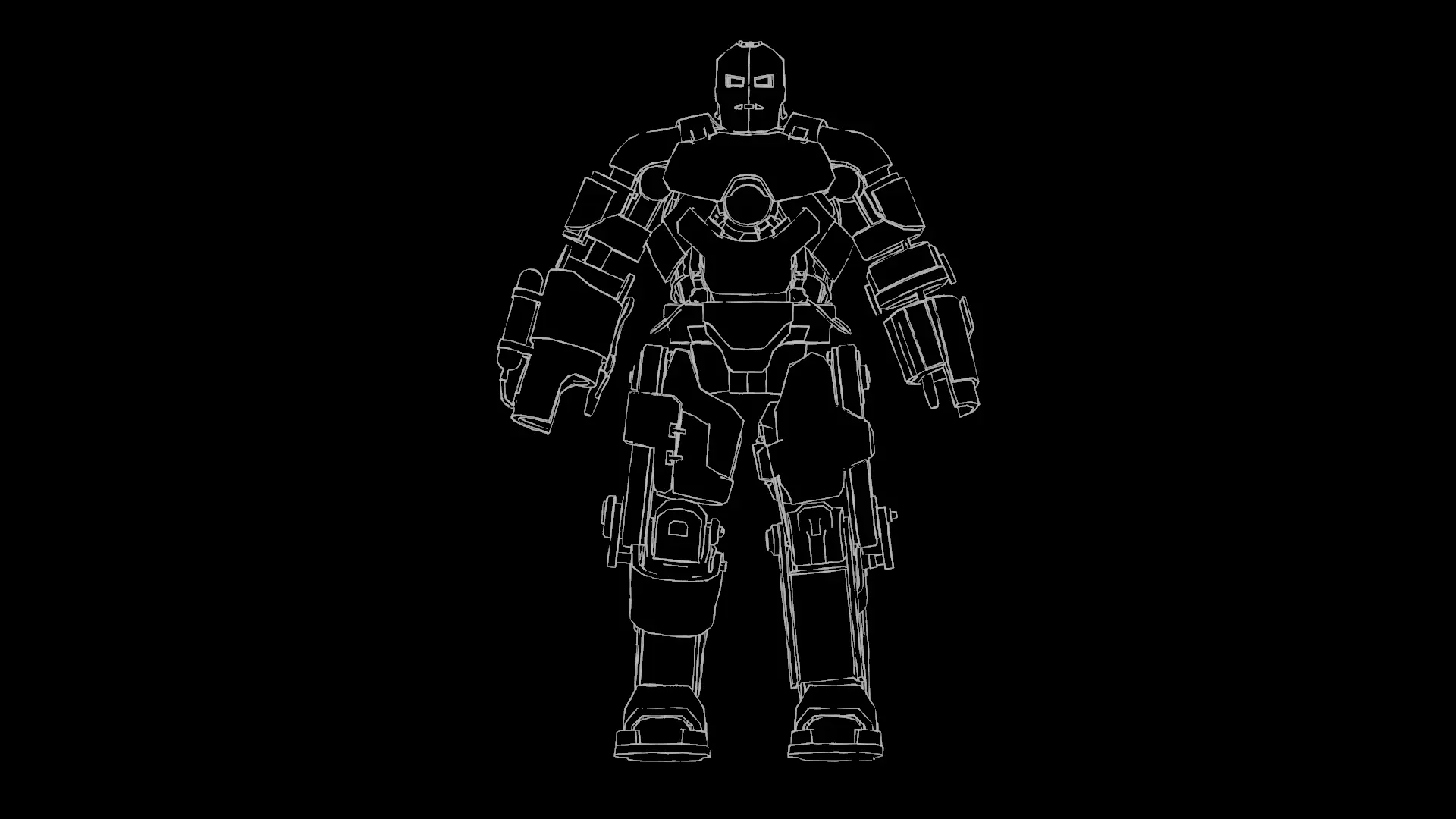
Enable audio for this experience?

Project 86-B 'Escape'
The Mark I is a brute. It's a walking tank forged from scavenged missile parts and sheer, unadulterated will. Every plate of steel, every noisy hydraulic actuator, and every exposed wire tells a story of survival. It wasn't designed to be elegant, it was designed to be a one-way ticket out of hell, a bulletproof sledgehammer to knock down the door. This isn't just a suit, it's the raw, unfiltered idea that a man could build his own salvation. This is where Iron Man truly began.

This self-sustaining cold fusion device, utilizing a palladium isotope core, generates a peak output of approximately 3 gigajoules per second.
All system power originates from the chest-mounted Arc Reactor. Its energy is routed to a dorsal power distribution bus, which then supplies the required voltage and amperage to all limb actuators and weapon systems via unshielded, external conduits.
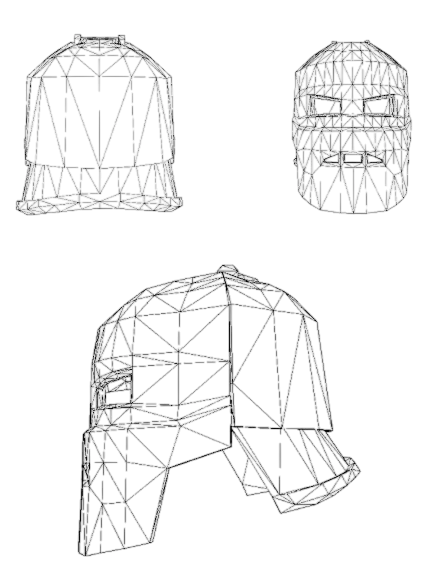
Operator head protection and psychological intimidation. This was designed first and foremost to be a bulletproof steel bucket.
Hammer-forged iron-manganese alloy steel, repurposed directly from Stark Industries missile casings.
-Optics:Direct line of sight through a narrow, reinforced ballistic slit, it is an open air aperture.
-Field of View (FOV):Critically limited. Estimated at less than 30 degrees horizontal, with zero peripheral vision.
-Heads-Up Display (HUD):None. All operational feedback was auditory and tactile.
Designed to withstand direct impacts from small arms fire (up to 7.62mm rounds). Structural integrity is lowest at the weld seams.
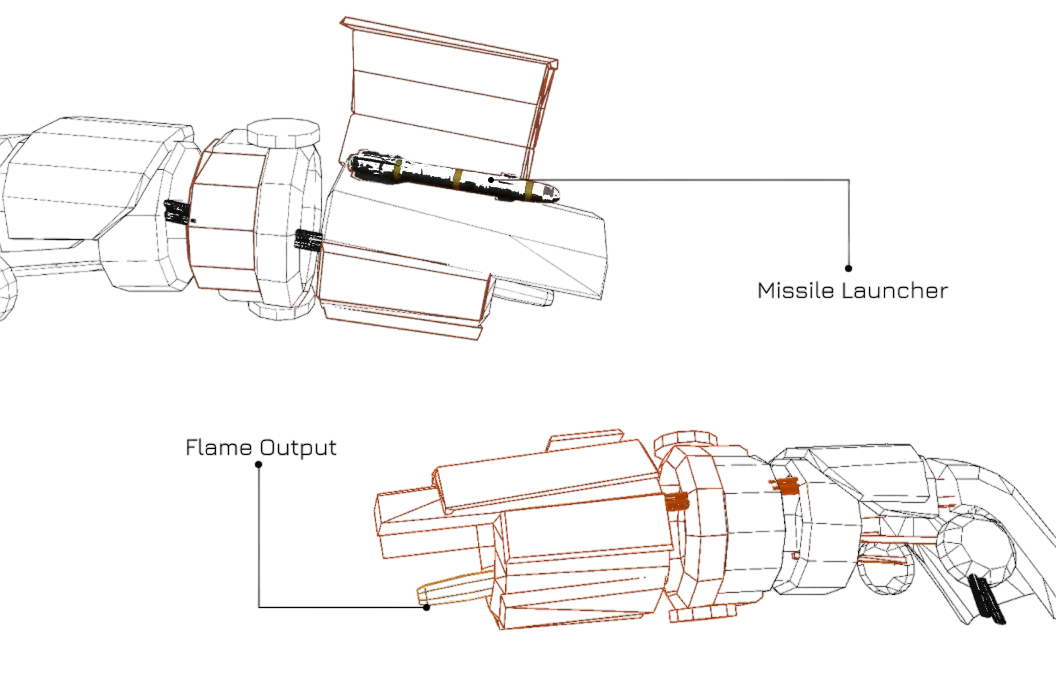
A low-pressure, single-loop hydraulic system powered by the central Arc Reactor. The motion is powerful but slow and deliberate.
A forearm-mounted, short-range flamethrower. And a mini missile
A simple, manually triggered valve releases the fuel, which is then ignited by a piezoelectric sparker at the nozzle.
A simple Forearm-Mounted Anti-Personnel 40mm 'Stinger' Micro-Missile.The "Stinger" is unguided. It's a point-and-shoot weapon. Beyond 100 meters, aerodynamic drag and crosswind make it too inaccurate to be reliable.And a damage radius of (5m-15m)
Mk1-FT "Dragon's Breath" System. This provided the suit with a dual-wielding incendiary capability.
The canister is filled with both the fuel (Gelatinized Petroleum Compound), and a compressed, Nitrogen gas. This gas acts as a propellant, creating a constant internal pressure that forcefully expels the fuel as soon as the valve is opened.
The schematic (highlighted in orange) shows the path of the reinforced, high-pressure fuel line. It runs from
-Solenoid Valve:Triggesr the weapon from inside the suit, an electrical signal opens this valve, releasing the fuel.
-Atomizer Nozzle:This component breaks the viscous fuel into a fine, combustible spray.
-Igniter:It fires at the exact same moment the valve opens, creating a high-voltage spark that ignites the atomized fuel as it exits the arm, creating a controlled jet of fire.
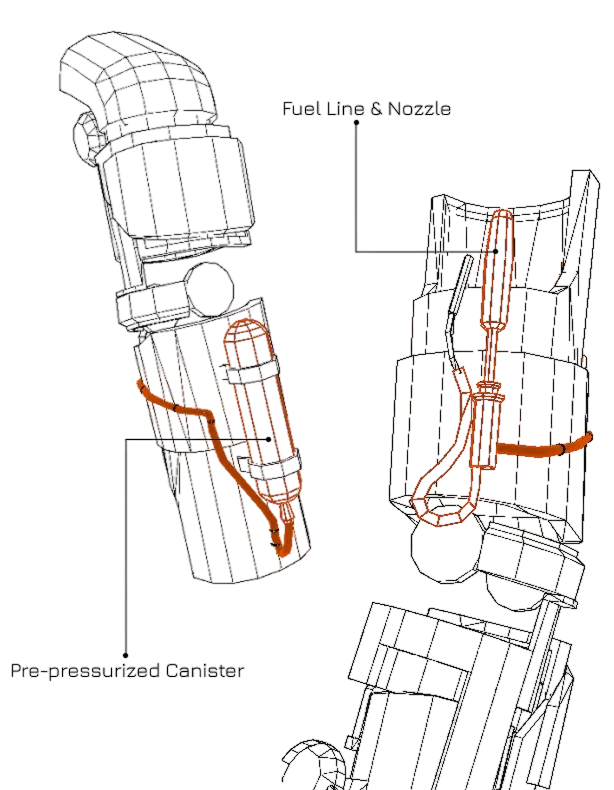
A hydraulic powered knee join primary drive cog.
-Inside the upper leg (the thigh portion), there is a massive, slow-moving hydraulic piston.
-Connected to this piston is a heavy-duty, reinforced drive chain.
-This chain wraps around the "wheel" the drive cog which is the pivot point for the knee.
-When the Knee is bent, the hydraulic piston retracts, pulling the chain, which in turn rotates the cog, bending the lower leg upwards. To straighten the leg, the piston extends, pushing the chain and rotating the cog in the opposite direction.
Primary Function: A Junction Box. The main electrical and hydraulic "outlet" for the lower leg.
Secondary Function: The Manual Bypass. If the ankle or knee actuator were to seize under pressure, The lever is a manual override. By reaching back and tripping it, it will dump the hydraulic pressure from that specific line, allowing the joint to go limp.


A low-pressure, single-loop hydraulic system poweA solid steel cog, identical to its left-side counterpart. It serves as the knee's pivot point, transferring the immense force from the drive chain into rotational movement.
A heavy-duty, industrial-grade roller chain. It is the "tendon" connecting the main hydraulic piston (the muscle) to the Drive Sprocket (the joint).
This label points to the ankle, which houses a secondary rotational actuator for stability.
The suit featured a set of jet boots that are built into the soles of the suit. These boots provided limited flight capabilities. Both the leg assemblies were equipped with jets, which made the ~1,500 lbs of steel airborne for a few minutes. The boosters, or thrust mechanisms, were made from parts of the "Jericho" missile.
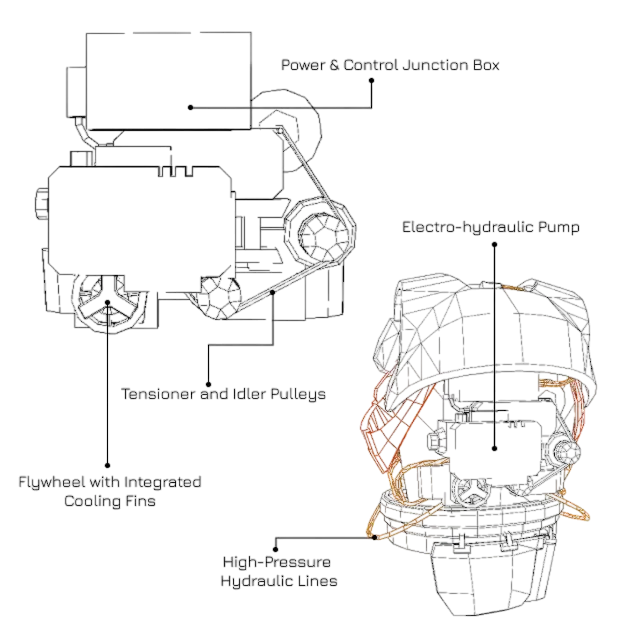
Suit's central nervous system and main circuit breaker. The raw, unfiltered power from the Arc Reactor is routed to here. Inside Controls sends simple analog signals, which then physically routed massive amounts of electrical current to the appropriate system.
Heart of the suit's muscle. The Electro part is the high-torque electric motor. This motor drives the hydraulic part, which is a gear pump that sucks in hydraulic fluid and pressurizes it to several thousand PSI.
Maintains rotational inertia for the electric motor. The cooling Fins actively pulls air across the pump assembly. This entire system generates a colossal amount of heat.
These are the thick, reinforced hoses that snake out from the pump assembly. They are the veins and arteries of the Mark I.